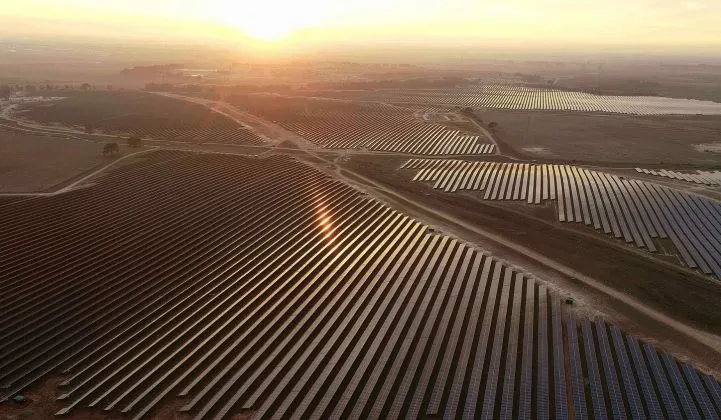Spain’s Solar Bubble Looks Ready to Pop. The Market Will Be Just Fine
Oct 30, 2019 04:15 PM ET

The Spanish solar market is red-hot. It’s hard to think of any solar market generating so much interest in the absence of a generous subsidy package.
The bulk of this speculation is built on the hope of securing a power-purchase agreement (PPA) for a chunk of a project’s capacity and selling the rest on the market. Great insolation and an ambitious renewable energy target (still currently in draft form) have drawn developer interest from across Europe at a time when former solar darlings Germany and the U.K. have slowed.
Wood Mackenzie expects around 4 gigawatts to be installed in Spain this year, with the overwhelming majority of that stemming from a 2017 auction. Beyond this year, the research firm is tracking a late-stage pipeline of 8.6 gigawatts and an even larger band of early-stage projects.
Inevitably, the bloated pipeline dwarfs the anticipated demand for PPAs. Talk of an emerging bubble has been simmering away in the background for a while.
The imagery of a bubble bursting doesn’t do justice to the untold economic, and very real human, costs often associated with such events. For example, within one year of the changes the U.K. made to its solar support regime in 2015, more than 12,500 people had lost their jobs. Disregarding projects that already had approvals in place, deployments in that region have remained pretty much stagnant.
Before that, Spain itself had set the bar on bursting solar bubbles very high with the "sun tax" and retroactive cuts to support. The government had taken out advertisements in newspapers encouraging people to cash in their pension pots to invest in solar projects. Before long, it was ending payments to these same solar projects.
Now Spain is heading toward a very different sort of bursting bubble, perhaps the first post-subsidy bubble to pop in the solar sector. Fortunately, the impact will be nowhere near as severe as the crutch being kicked away from a subsidy-based market.
"Massive speculation"
With a limited supply of PPAs, it’s a solar power buyer's market right now in Spain, with the contracted prices offering heavy discounts compared to the current wholesale prices. If PPA offtakers, and investors, have their pick of projects, it follows that the cream will rise to the top and less capable developers and suboptimal projects will fall by the wayside.
“There is massive speculation in Spain. It's creating a bubble,” said Conor McGuigan, director of business development for Europe at the developer Lightsource BP. The company has been in Spain for around a year and in October announced it had acquired a late-stage portfolio amounting to 300 megawatts from Forestalia.
McGuigan praises the quality of those projects, adding that having just shopped around, there are not as many ready-to-build projects as people think. He expects a lot of lower-quality projects to fade out early in the process, with common sense prevailing.
McGuigan points out that Spain is not new to solar, having already built out several gigawatts of capacity. That gives the market the tools to home in on the best projects.
“There's going to be a lot of attrition. It's a mature market for solar. The banks are comfortable with it; the investors are comfortable with it. The only downside is that there is not a firm government policy,” said McGuigan.
The auction process is considered overcomplicated, and plans for an overhaul remain in draft form only. Political uncertainty looms large.
Back in the unsupported solar realm, Lightsource BP has just started the process of negotiating PPAs for the Forestalia projects. McGuigan is open to mixing these with a significant merchant component; he floats a 70:30 ratio in favor of the PPAs as a ballpark figure.
The company's PPA team will determine the best route forward on a project-by-project basis, and even then the best option could fluctuate during a project’s development timeline.
"Two-tier market"
Spain’s grid authorities have not been shy about taking action to hone the field of solar speculators. Regulators have trimmed more than 20 gigawatts of PV projects from the grid connection queue and quadrupled the guarantees required to open an application to €40,000 ($44,440) per megawatt.
Andrea Grotzke is the global head of energy solutions at BayWa r.e., the German developer behind the 175-megawatt subsidy-free Don Rodrigo project in Spain, considered to be the first substantial unsupported project in Europe.
Having already secured 225 megawatts of PPAs with Statkraft, Grotzke is bullish about her firm’s prospects of securing more such deals and is open to adding an element of merchant risk if need be.
“Grid connection is more of a crucial issue,” she said before echoing McGuigan’s expectation of very high attrition in that pipeline.
“If you look at Chile and Australia in the past, both had huge pipelines but only a limited number of projects reached the notice-to-proceed phase,” she said.
Both Lightsource BP and BayWa r.e. are remarkably bullish about a market being linked to a bubble.
Tom Heggarty, senior analyst at Wood Mackenzie Power & Renewables, said he expects to see a "two-tier market" in Spain.
"There will be first-mover developers that stay in business by spotting opportunities early and then flipping," Heggarty said. "But the companies that we think will bring those projects to market, either down the PPA route or the merchant route, are the larger independent power producers: the utilities and the oil and gas players."
"These are the sorts of companies that have trading abilities to manage some of the risks associated with going merchant and the ability to potentially absorb more equity within their financing," he said.
While this means some consolidation in the short term, Heggarty expects Spain to emerge from any bursting bubble with an annual market on the order of 2 to 3 gigawatts. Compared to the carnage following previous solar bubbles in Europe, that’s a soft landing.
Also read

